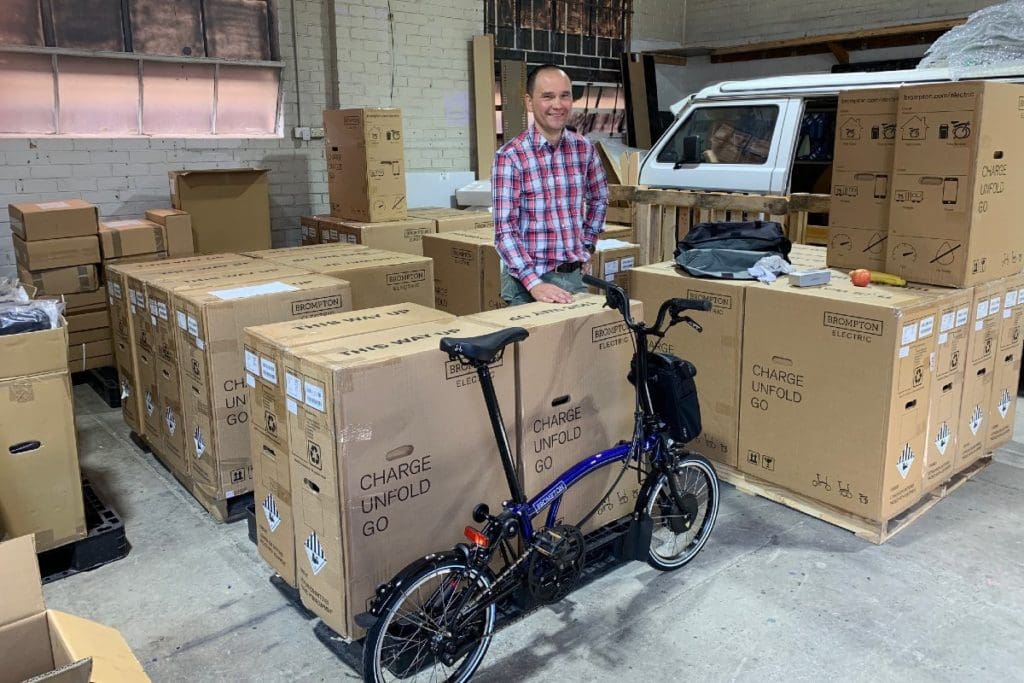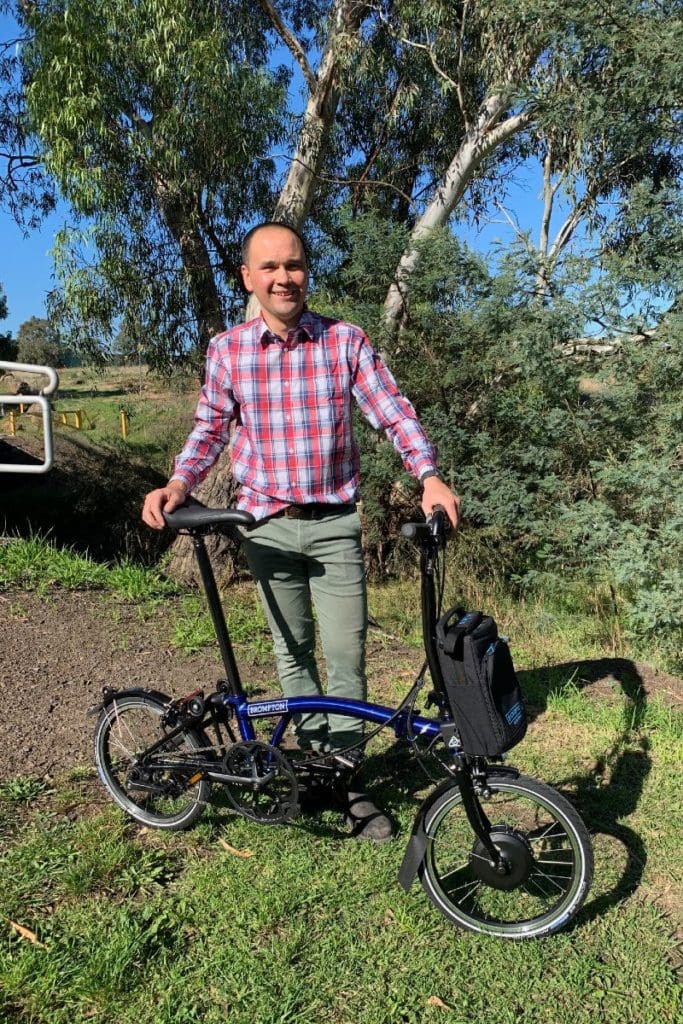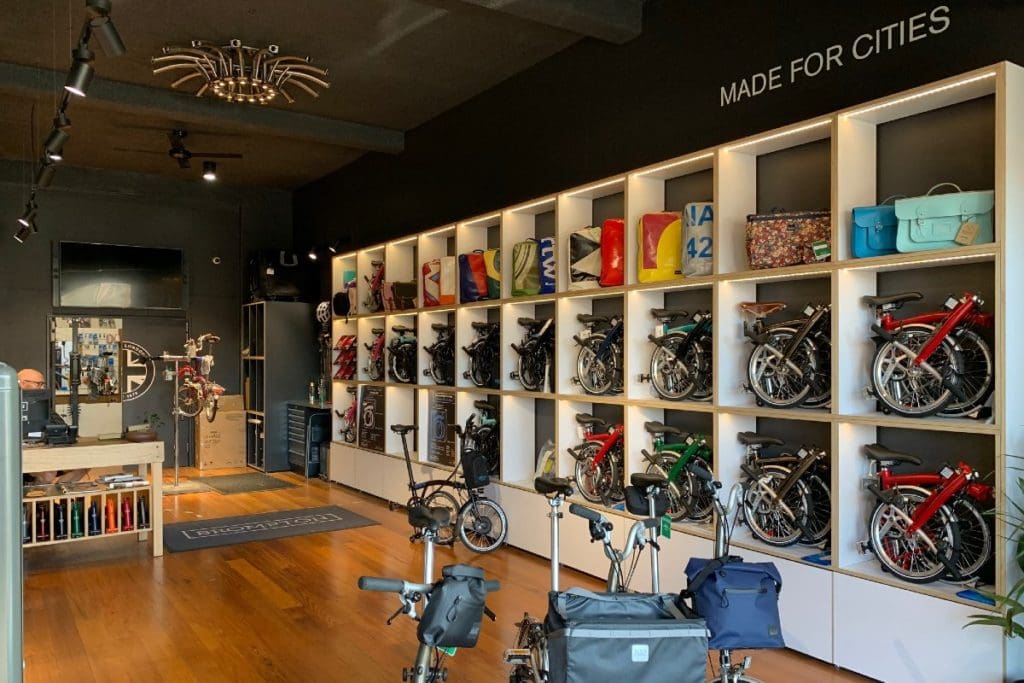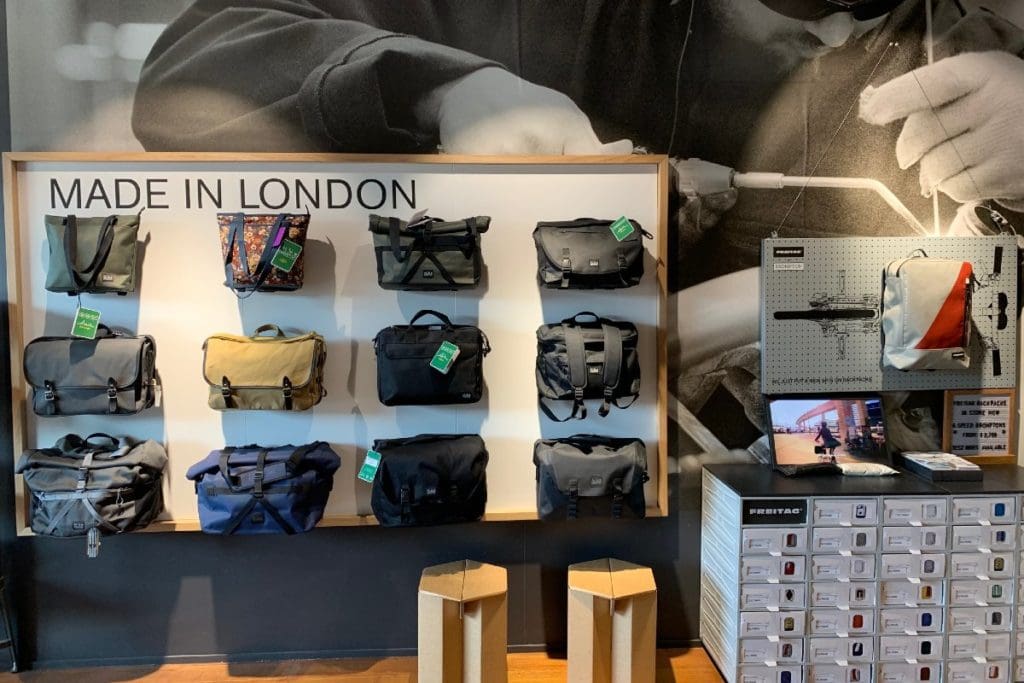Brompton Australia Struggling to Meet Surging Demand

Many Australian bicycle dealers dismiss the ‘funny looking little folding bikes’ from Brompton as something of a novelty. But they may be surprised to learn that Brompton now employs over 300 staff. They were already making 50,000 bikes per year pre-covid, all in London, UK and they’re aiming to reach 100,000 per annum production within 18 months.
Partly this demand has been driven by increasingly dense urban living. You only have to look at every city in Australia to see cranes on the skyline, building ever more high rise apartment towers, not that apartment dwellers are the only Brompton customers.
Consequently, consumer demand for Bromptons in Australia has also surged.
We recently visited the new owner of Brompton Australia, who has moved the business from Canberra to Melbourne.
Martin Tse was living in London, having worked in a ski resort and in property management, when he decided to follow his childhood passion to become a bike mechanic.
He then spent a couple of years on minimal wages, learning his trade in a London bike shop chain.
After a brief stint with Canyon when they set up their UK office, heading up their technical and warranty area, Martin reached out to Brompton, who were also looking for a technical warranty person. He ended up joining their first of what is now a global network of Brompton Junction concept stores, in London’s Covent Garden. So far there is only one of these in Australia, in Melbourne.

From there, Martin moved to Brompton’s previous factory in Kew where he headed up their technical, warranty, and customer service team.
Brompton then moved to their new, much larger factory in Greenford, slightly further out from the centre of London.
After a couple of years, he was sent to run the Hong Kong office, overseeing the distribution into the direct markets of Indonesia, Thailand, and Singapore and Hong Kong.
Then after two years in Hong Kong, Martin relocated to his wife’s home town of Melbourne. He began working for the previous Brompton Australia owner, bike industry veteran Peter Keast. When Peter retired, Martin bought the business.
“Then the pandemic came along and it’s been all go ever since!” Martin exclaimed.
“Due to supply issues, we’ve actually had to, unfortunately, let go of a few dealers. We had to focus on some of the core dealers. We’re currently looking at about 15 to 16 dealers Australia-wide and a couple in New Zealand.”
To try to meet surging demand, Brompton has accelerated their previous growth target to hit 100,000 bikes per year, from five years to 18 months.

Unlike most manufacturers who just get a standard groupset and components, Bromptons contain many weird and wonderful parts unique to their single bike design, that has been gradually refined, but fundamentally unchanged for 42 years since its invention in 1979.
“A lot of the parts are proprietary and still made in the UK,” Martin continued. “The injection moulding is made in the UK and where possible they try and source parts closer to home just for assurance of supply chain. They now build all their wheels in-house. They have two-wheel building machines, so they control that now. They have their own paint plant in-house now too. They build to order so every bike is built to spec and there’s no unordered stock.
“There is the ability for a consumer to what they call the bespoke option (similar to Trek’s Project One). In Australia, the lead times on those are quite long because we sea-freight everything.”
Despite the current inability to meet demand, Martin is already thinking longer term and how he can further grow Australian demand.
“I think we need to do a lot of brand work to get the bike seen in a lot more places,” he said. “We need to get people thinking that they could use a bike like a Brompton in their life.
“Australia’s cycling market is very sports-dominated. The Brompton is not a sports bike by any stretch of the imagination, though it’s very capable.
“We’re pulling this idea of a folding bike with small wheels into the mainstream. We’ve been working really hard on that over the past 12 months.
“We try to do lots of collaborations with complementary brands. We’ve worked with Rapha in Melbourne here quite a lot. We both benefit from collaborations and we obviously have a similar history. Brompton being a bit older than Rapha, but both forged in London originally. “We are just about to undertake a window display with Birkenstock (an iconic Australian shoe brand) here in Melbourne.”

After a long wait, Brompton Australia recently landed their first shipment of electric models. This bike was years in development due to the challenge of fitting a battery and motor without expanding Brompton’s tiny folded dimensions.
Their solution was to house the battery into a quick release fabric bag, complete with grab handle that slots into a custom made bracket and power plug fitted to the bike’s tiny head tube. That way the battery does not move when the handlebars are turned, which would otherwise compromise the steering responsiveness and handling.
All of this custom development has come with a significant price tag.
The biggest selling model in non-electric is a six-speed steel bike with mudguards. That is $2,775 whereas the electric six-speed model is $6,740, a premium of almost $4,000.
Despite this hefty price, the initial shipment of ebikes was fully pre-sold. There were only ebikes in the warehouse when we visited because they needed some minor compliance modifications before being shipped to dealers.
Brompton does not sell any bikes consumer direct.
“We only sell via dealers,” Martin confirmed. “There’s a lot of propriety parts on a Brompton so there is a need for some degree of specialist knowledge for sales and servicing as well.”
Once Martin has caught up with fulfilling demand from his existing dealer base, he will be looking to expand Brompton’s footprint across Australia and New Zealand. Although he realises that Australia and New Zealand will predominantly remain sports bike markets, he’s confident that Brompton has huge, dare we say unfolding, potential for expansion.
